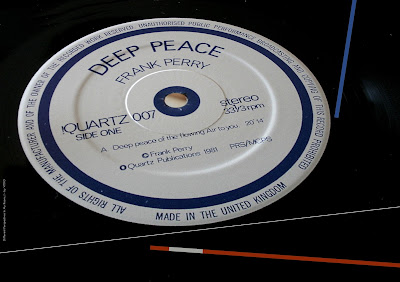Label: Les Disques Pierre Cardin – STEC 131
Format:
Vinyl, LP, Album / Country: France / Released: 1972
Style:
Free Jazz, Contemporary Jazz, Free Improvisation
Recorded June
19. 1972 at the Montreux Jazz Festival.
Design
[Cover, both side] By – Pierre Cardin
Photography
By [Front/Back Cover] – David Redfern
Engineer
– Stephen Sulke
Graphics
– Hartmut Pfeiffer
Mastered
By – Christian Orsini
Producer,
Mixed By – Emmanuel "Pinpin" Sciot
Original
French pressing with round corners
Matrix
/ Runout (Side A runout, etched): STEC 131 A
Matrix
/ Runout (Side B runout, etched): STEC 131 B
It's not my rip (a gift from A. R.) so I apologize for the relatively poor sound. But the album is great.
It's not my rip (a gift from A. R.) so I apologize for the relatively poor sound. But the album is great.
A - The
Executive Suite ....................................................................
26:00
B1
- Falling ...........................................................................................
9:00
B2
- It Does Not Really Matter Who You Are .....................................
15:00
All
compositions by Gordon Beck
Phil
Woods and his European Rhythm Machine:
Phil
Woods --- alto saxophone
Gordon
Beck --- piano
Ron
Mattewson --- bass
Daniel
Humair --- drums, percussion
This LP is a real rarity how for the record
company that produced it, so also for the jazz music and the huge number of
admirers an early Phil Woods. The album has never re-issued on CD.
In the early 70s, the
Italian-French fashion designer Pierre Cardin, great lover of music, founded a
record company in his name, which had very short life and that was
distinguished by his covers particularly elegant artwork, designed by himself.
In the short period of activity he published several LP's, not only of jazz, among which also the French edition of the Concerto Grosso by New Trolls.
Of
particular interest are the recordings made during the Montreux Jazz Festival
1972 concert by Jean-Luc Ponty, the Lubat, Louis and Engel Group, in addition
to this the European Rhythm Machine Phil Woods, who at the time was hailed as a
masterpiece.
Briton
David Waddington critic of Jazz called this album "a fluid and
breathtaking improvisation titanic wise." The A-side of the vinyl with
engaging twenty-five minutes of 'Executive Suite was also described by critics
Brian Case and Stan Britt, in their Illustrated Encyclopedia of Jazz, "a
tour de force of the alto sax, with no accompanying sequences in which Woods
gives vent his extraordinary instrumental mastery acute from screaming extreme
to severe extreme moaning of the instrument. "
In
England, the album was released by Verve, on granting the French publisher,
with a different layout.
At
a distance of forty four years the record is still valid and is an
extraordinary testimony to the evolutionary trend of those years jazz. Roberto
Arcuri, about that experience said, "Go and hear the term European Rhythm
Machine, that was not a rival of no one, Phil Woods was a wonderful musician,
super, which remained like that. "
Colossal
music. My favorite album for this month.
If
you find it, buy this album!























































